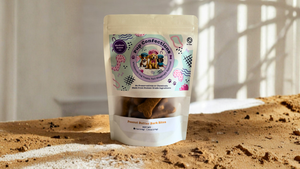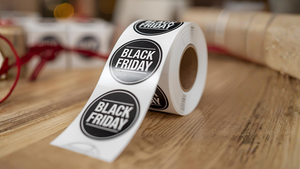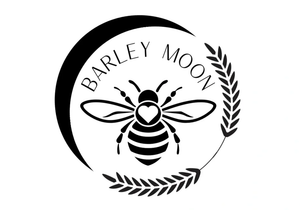What’s in a Label: Cosmetic Label Requirements Made Easy

Congrats! Your health & beauty startup just created a killer new face moisturizer. You can’t wait to unveil the product to your customer base and get it in stores. Anyone familiar with the cosmetic world knows that an innovative product like this can be a game-changer for a beauty brand — not only for your customers’ pores but for your bottom line.
Before you start shipping and counting your profits, you need to make sure your product is ready for shelves. Does your product adhere to FDA regulations? Further, does your packaging have the correct cosmetic label requirements?
Gah! Those might seem like intimidating questions, but don’t panic. No reason to give yourself wrinkles — hehe — over this.
We’re here to help you understand FDA cosmetics labeling requirements and how to display them on your product correctly. Here’s your guide to cosmetic label requirements for health & beauty startups.
Who Must Adhere to FDA Regulations?
Well, the short answer is… everyone. FDA regulations aren’t an optional thing. If you’re selling a product, it’s gotta be within the lines. Think of FDA regulations similar to taxes. You can find ways to work around them legally, but you can’t ignore them. That will not end well for your business.
An intelligent way to think about cosmetics label requirements is to understand what products specifically fall under cosmetics regulations. According to the FDA’s website, cosmetics are “articles intended to be applied to the human body for cleansing, beautifying, promoting attractiveness, or altering the appearance without affecting the body’s structure or functions.”
The FDA goes on to clarify this further. What falls under this definition are products such as skin creams, lotions, perfumes, lipsticks, fingernail polishes, eye and facial make-up preparations, shampoos, permanent waves, hair colors, toothpaste, deodorants, and any material intended for use as a component of a cosmetic product.
However, this does not include soap (unless said soap claims to do something beyond cleansing the human body).
But what if your health & beauty brand is small potatoes? Maybe you make homemade cosmetics out of your house as a side hustle and sell them at pop-ups or other markets on the weekend. Do you need to follow FDA regulations?
Yes. You do. If you manufacture cosmetics in your home, you must adhere to FDA cosmetic label requirements.
Do My Products Have to Be FDA Tested?
No. The FDA has no authority to test before a product enters the market, nor do they have standardized tests for cosmetic products.
But, that said, health & beauty brands — no matter the size of the cosmetic company — must correctly display ingredients on a cosmetic label. These ingredients must not be adulterated or misbranded. Outside of ingredients on the FDA’s restricted list and color dyes (don’t forget about color dyes!), you can use anything for creating a cosmetic product.
Yup, that’s right. You can put pretty much whatever you want in your beauty supplies as long as you’re transparent and accurate with the ingredients used.
The Basics of Cosmetic Labels Requirement

And that brings us to the meat of this article: the basics of cosmetic labels requirements. With this guide, you should fully understand what you need to make an FDA-compliant cosmetic label.
On top of a great design — we can help with that — these are the legal requirements you need to consider.
True Claims
This might seem obvious, but don’t lie about what’s in your cosmetic product! Don’t even fudge the lines a little bit because that’s a sure way to run into trouble.
You might be thinking, hey, I make my products at home and sell them to friends or at the local farmers’ market on the weekends, so I don’t need to abide by these rules, right… right? Wrong.
No matter what, if you make a product, it must adhere to cosmetics label requirements. We’ll get into details below, but if you’re curious about how to organize and stylize the information of your product properly, here’s a helpful cosmetics labeling guide from the FDA.
Declaration of Ingredients
Your label must accurately declare every single ingredient used in your cosmetic product. Don’t complicate things. Be transparent with what is used to create your product.
The ingredient declaration must be in English and somewhere on the label where it’s likely to be read at the time of purchase. That means it could be on an information panel on the product, the box wrapping, or on an attached tag.
In terms of how to display the declaration of ingredients, the FDA provides this guiding language: “The letters must not be less than 1/16 of an inch in height. If the total package surface available to bear labeling is less than 12 square inches, the letters must not be less than 1/32 of an inch in height. Off-package ingredient labeling is permitted if the cosmetic is held in tightly compartmented trays or racks, it is not enclosed in a folding carton, and the package surface area is less than 12 square inches.”
Moreover, the ingredients must be declared in descending order of predominance. Think of the presentation as similar to nutrition labels. You want to know the primary ingredient in something you’re about to consume, and that’s always listed first.
As previously mentioned, the FDA outlines a very clear list of prohibited ingredients for cosmetic products, which you can view on their website, so don’t put these in your product. This also includes any and all color additives. Don’t guess or assume some form of color dye is OK because it very well might not be. Follow the list of FDA pre-approved color additives.
More questions? Take a gander at the FDA website.
Toxicity / Health Warnings
The FD&C Act does not require cosmetic companies to test products for safety, but c’mon. If you’re making a product, you should clearly understand what could happen if used improperly. Moreover, the FDA “strongly urges cosmetic manufacturers to conduct whatever toxicological or other tests are appropriate to substantiate the safety of their cosmetics.”
So, in other words, you don’t have to test your product, but it’d be pretty lame if you didn’t. Not to mention dangerous for your customers!
If there are potential risks with your health & beauty brand’s new cosmetic product, you must put appropriate warnings on the label and indicate adequate directions for safe use. This information must be clearly and obviously placed on the label.
Tamper Evident Packaging
For some cosmetic products — think liquid oral hygiene items such as mouthwashes and fresheners — the FDA requires tamper-resistant packaging when sold at retail.
This could be a shrink or tape seal, a sealed carton, a tube or pouch, or an aerosol container. Moreover, it must be very evident if the product has been tampered with.
For the exact legalese on how to ensure your cosmetic product is appropriately packaged, the FDA has specific guidelines.
Other Considerations for Your Labels

Hey, we get it. All this legal jargon about FDA cosmetics label requirements is booooooring, eh? When you get caught up in ensuring your product meets all the cosmetic label requirements, it’s easy to forget that designing labels should be an enjoyable and creative endeavor.
In fact, well-designed labels can act as effective messaging for your brand. It’s not just something the government requires you to do.
Beyond nailing the FDA cosmetics label requirements, we’ve got recommendations on other factors to consider when designing your label.
Physical Address (Fair Packaging & Labeling Act)
OK, we’re not totally done with the legalese. Back in 1966, the government enacted the “Fair Packaging & Labeling Act.” What this means is that every consumer product is required to identify the name and place of business of the product’s manufacturer, packer, or distributor.
To meet the FDA cosmetics label requirements, you must include a street address, city, state, and zip code. This doesn’t necessarily need to be where the cosmetic was manufactured, packed, or distributed. It could be a primary place of business (say, a storefront) or another reasonably suitable location.
And sorry, a post office box or website address isn’t adequate in the eyes of the FDA.
Contact Information + Social Media
Beyond an address, your label allows you to connect with your customers directly. That means each label should include contact information — a phone number or email — and calls to your social media.
If you nail the design and placement of these details on the label, they can quietly encourage customers to tag your social accounts and market products for you. Mix that in with smart marketing strategies — such as creating custom stickers — and you may see some organic growth.
Consistent Branding
Your stuff should look like, well, your stuff. Maybe that’s an obvious statement, but it may surprise you how common it is for companies to screw up their branding. When someone sees a product created by your health & beauty startup, they should know it’s your product simply by the look and feel.
Put it another way: When you see someone carrying a Subway sandwich, you don’t wonder where they got it. You find yourself resisting the urge to get a Cold Cut Trio.
That ethos remains the same when it comes to cosmetic label requirements. Once you take the time to put together all of the details of your product and check them against the FDA’s cosmetics label requirements, apply your style and approach to all of your products; this universal approach will ensure consistent branding while playing by the rules.
Double-Check Before Printing
Don’t assume anything. Check your work. Make sure all details are good to go. Does the label of your new face moisturizer adhere to FDA cosmetics label requirements? Is everything spelled correctly? Does the design work?
Or, as your grandfather would say: “Measure twice, cut once.”
Understand Cosmetic Label Requirements and Print Your Labels Today
Approach designing labels like dressing for cold weather in a stylish city. You need to ensure you’re accurately hitting all the marks — correct layers, thick socks, long underwear, etc. — but you’ve also got the right kind of jacket to look fly while staying warm.
Cosmetic labels need to provide accurate information to your customers. But they also need to look good and match the overall tone of your health & beauty brand.
What are you waiting for? Start designing your cosmetic labels today.
- Tags: Health & Beauty Labels
- Nashira Edmiston
















































